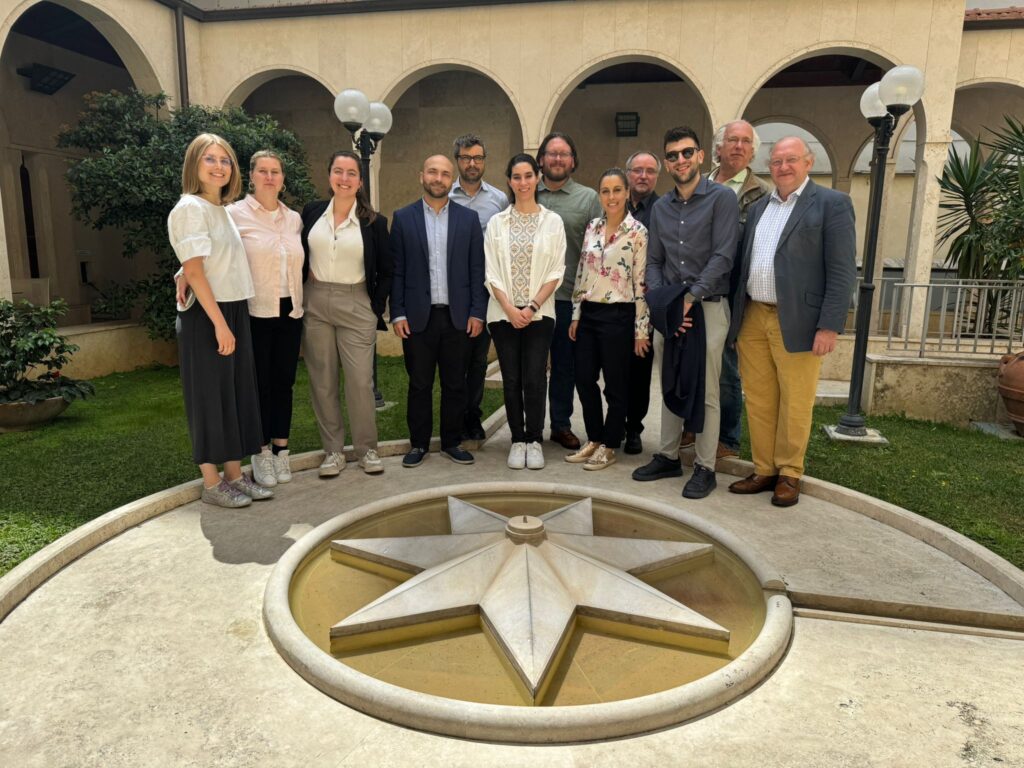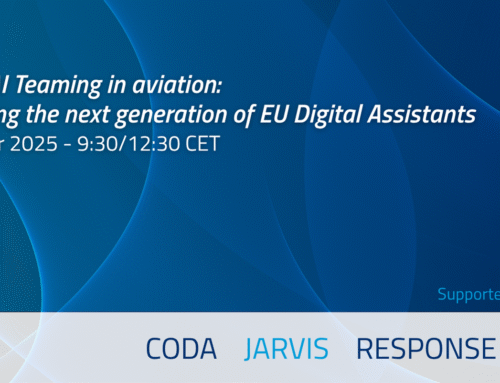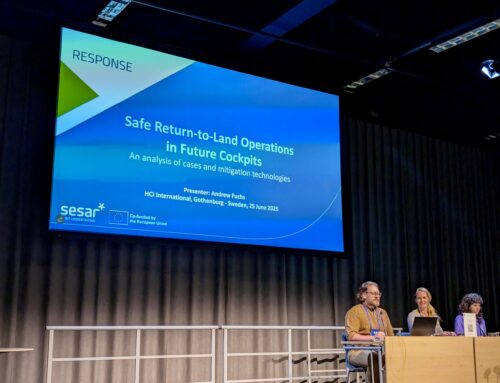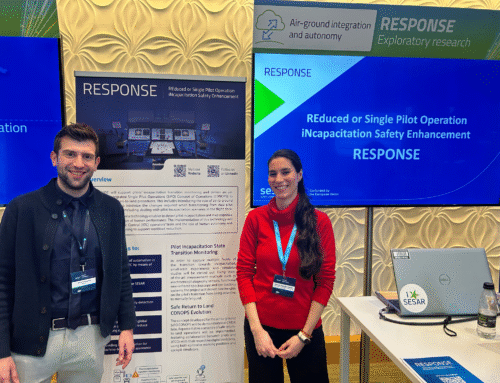RESPONSE Brings Together Industry Leaders for First IAB Workshop in Rome

On May 7-8, Deep Blue hosted RESPONSE first Industrial Advisory Board (IAB) workshop in Rome. Twenty-six experts gathered for the hybrid sessions, including consortium members and advisors.
RESPONSE IAB members include experts from a wide range of fields — from researchers and engineers to airline operations managers, aircraft manufacturers, air traffic controllers, and academic professionals — representing major aviation organizations such as International Federation of Air Traffic Controllers’ Associations (IFATCA), Air Traffic Controllers European Unions Coordination (ATCEUC), European Pilots, International Air Transport Association (IATA), European Business Aviation Association (EBAA), Bombardier, AirNav Ireland, and Technische Universität Darmstadt.
Some of the insights gathered during the sessions are:
Pilot incapacitation transition monitoring method
The RESPONSE Team introduced the different types of incapacitation. The work is focused on transition monitoring due to mental fatigue, in particular the new methodological approaches using electroencephalography (EEG), functional Near-Infrared Spectroscopy (fNIRS) and eye-tracking that are being investigated to assess changes in alertness and the Hardware-in-the-Loop (HIL) experiments that are planned for the second half of the year to identify benefits and limitations of the methods and their ability to measure incapacitation transition.
In this regard, issues about data privacy, intrusiveness and regulatory aspects were mentioned by the IAB during the discussion after the presentation as relevant aspects to consider.
CONOPS and aircraft failure scenarios
The initial concepts defined in RESPONSE for the 4 CONOPS steps were introduced to gather the IAB members’ feedback about challenges and identify operational and technological gaps.
The main issues discussed were:
- how to train pilots and air traffic controllers (ATCos) for using the assistants;
- how to ensure the air-ground communication for the assistants;
- how to address testing and certifying these systems;
- how to redefine Crew Resource Management (CRM), considering the changes in roles, responsibilities, accountability, etc.;
- how to avoid increasing the workload in stressful situations such as the ones considered;
- how to build trust in the systems.
Cockpit and ATC digital assistants
The focus of this session was on understanding the end-user needs and discussing some key aspects of human performance, considering that the cockpit digital assistant is expected to have a higher level of automation than the ATCo digital assistant. The outcomes of the session will be used to refine the requirements for the systems and define their behaviours.
The input gathered revolved around the “must-have” and “never-do” that would characterise them, such as trustworthiness and usability aspects, impact on workload and safety, human centred concepts, task delegation or desired level of automations for each scenario.
Thanks to these session, valuable feedback was collected that will help refine and shape RESPONSE safe return to land Concepts of Operations (CONOPS) and air-ground assistants.
This knowledge will be incorporated into the next project deliverables, and the members of the Advisory Board will be constantly engaged through the following steps.



